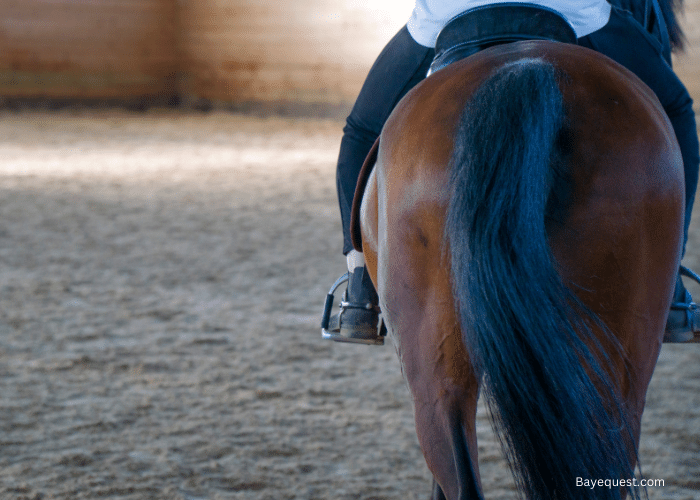Introduction:
Welcome fellow equestrian enthusiasts! Today, we’re delving into the world of equine massage therapy, a holistic practice that can help your horse feel and perform at its best. We’ll explore the benefits, techniques, and tips for incorporating this healing art into your horse care routine. So, saddle up and let’s get started!
1. What is Equine Massage Therapy?
Equine massage therapy is a hands-on technique designed to improve a horse’s physical condition, alleviate discomfort, and promote overall well-being. This therapeutic practice involves the application of manual pressure and manipulation to a horse’s muscles, tendons, and fascia, which can help release tension, enhance circulation, and boost performance.
2. The Benefits of Equine Massage Therapy
Equine massage therapy offers numerous benefits for horses of all ages, breeds, and disciplines. Some of the most significant advantages include:
- Improved muscle tone and flexibility
- Enhanced range of motion
- Reduced stress and anxiety
- Prevention of injuries
- Faster recovery from workouts and injuries
- Increased performance and stamina
- Strengthened bond between horse and handler
3. Techniques Used in Equine Massage Therapy
Equine massage therapists employ various methods to address specific issues and cater to each horse’s individual needs. Some of the most common techniques include:
- Effleurage: This gentle stroking technique helps warm up the muscles, increase circulation, and promote relaxation.
- Petrissage: By kneading, rolling, and compressing the muscles, petrissage stimulates muscle fibers and releases tension.
- Tapotement: A rhythmic tapping or percussive technique, tapotement invigorates the muscles and can help relieve tightness and spasms.
- Friction: Focused, deep pressure applied to the muscles can break up adhesions and scar tissue, improving mobility and flexibility.
- Myofascial release: This method targets the fascia, the connective tissue surrounding the muscles, to release restrictions and improve movement.
4. Signs Your Horse May Need Massage Therapy
It’s essential to recognize when your horse may benefit from massage therapy. Here are some signs to watch out for:
- Stiffness or reduced range of motion
- Sensitivity to touch or grooming
- Behavioral changes, such as irritability or resistance
- Unexplained lameness or uneven gait
- Poor performance or decreased stamina
- Muscle spasms, tightness, or atrophy
- Difficulty bending, flexing, or extending limbs
If you notice any of these signs, consult with your veterinarian and a certified equine massage therapist to determine the best course of action.
5. Finding the Right Equine Massage Therapist
When seeking an equine massage therapist, it’s essential to choose a certified professional with a solid understanding of equine anatomy, biomechanics, and individualized treatment techniques. Look for therapists certified by reputable organizations, such as the Equine Massage Association or other similar entities. Additionally, ask for recommendations from fellow horse owners, trainers, and veterinarians.
6. How to Incorporate Equine Massage Therapy into Your Routine
Here are a few tips on incorporating equine massage therapy into your horse care routine:
- Schedule regular sessions: Aim for monthly massage sessions to maintain your horse’s health and address any issues early on. More frequent sessions may be needed during periods of intense training or competition.
- Warm-up and cool-down: Support your horse’s muscles by incorporating proper warm-up and cool-down routines before and after workouts.
- Monitor your horse’s response: Pay attention to your horse’s body language and reactions during and after massage sessions. This will help you identify areas of discomfort or tension and communicate more effectively with your therapist.
- Be proactive: Learn basic massage techniques to practice between professional sessions. This will not only benefit your horse’s well-being but also strengthen the bond between you.
- Complementary Therapies to Enhance Equine Massage
For even better results, consider combining equine massage therapy with other complementary therapies. Some popular options include:
- Chiropractic care: By addressing misalignments in the spine, a certified equine chiropractor can help improve your horse’s overall movement and well-being.
- Acupuncture: This ancient practice involves the insertion of thin needles into specific points on the body to stimulate healing and balance energy.
- Cold laser therapy: Low-level laser therapy can help reduce inflammation and promote healing by stimulating cellular activity and blood flow.
- Equine stretching exercises: Regularly practicing targeted stretches with your horse can improve flexibility and help prevent injuries.
8. Frequently Asked Questions About Equine Massage Therapy
Q: How long does an equine massage session typically last?
A: An average session lasts between 45 minutes to an hour. However, the duration can vary depending on the horse’s needs and the therapist’s assessment.
Q: Can equine massage therapy replace veterinary care?
A: No, equine massage therapy should be used in conjunction with regular veterinary care. Always consult your veterinarian if you suspect an issue with your horse’s health.
Q: Is equine massage therapy safe for all horses?
A: Generally, equine massage therapy is considered safe for most horses. However, it’s crucial to work with a certified therapist who can assess your horse’s individual needs and adjust their approach accordingly. If your horse has a specific health issue, it’s always a good idea to consult with your veterinarian before beginning any new therapy.
Conclusion:
Equine massage therapy is a valuable addition to your horse’s care and performance regimen. By addressing muscle tension, enhancing mobility, and promoting overall well-being, you can help your equine partner achieve its full potential. With the right therapist, regular sessions, and a keen eye for recognizing signs that your horse may need therapy, your horse will be galloping towards success in no time!









